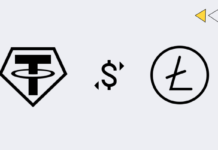Blockchain is a distributed ledger technology. The records get updated into the ledger in real time. This ledger is completely secure because no entity can change it forever. More and more companies are making use of blockchains. Even one of the biggest sports companies in USA, the Major League Baseball has launched a crypto blockchain game, where you can make your own MLB expert picks.
Meanwhile, bank debit or credit cards have been in use for more than a decade now. However, the cards banks issue now are different from their earlier cards in one significant way. Cards now have a golden chip embedded on the front. This allows the cards to store data in it. When needed, the appropriate card reading technology can read this data. This type of card is a smart card.
Listed below are the benefits of smart cards in blockchain app development:
1. Scalable:
A very interesting case study demonstrates this advantage. It is the process for submitting e-residency applications for Estonia. The entire process sits on a secure blockchain. The benefits continue even after the user gets citizenship. Some examples are voting, filing taxes, or even day-to-day banking transactions.
All this is possible because the blockchain developers provided chip-enabled smartcards to citizens. Hundreds of new citizens join this blockchain every month. Their individual smartcards help them to do this without any hassles.
2. Greater Integration:
Today’s technology has brought in several new innovations in our lives. We use wearables to gauge out levels of physical fitness. We use smartphones for accessing every conceivable app for all activities. The internet of things has made all devices interconnected.
The blockchain is also a multi-user arrangement. Smart cards allow the blockchain to store more than one user key in a secure manner.
3. Better Security:
When app developers work on developing a blockchain, security is of the key issues. Most blockchains have a combination of private and public keys. A chip-enabled smart card is one of the best ways for the app developer to store the private keys in a secure way. A smart card helps the blockchain to also become actually distributed. Smartcards achieve this without needing the authorization from a central figure. Also, it does not compromise on security.
4. The Provisioning for Wallets:
Today, no one has the patience for long turnaround times for financial transactions. Any blockchain with a blockchain wallet will gain faster acceptability and greater usage. With near field communication technology, smartcards can help to store different payment information. This includes passwords and digital signatures.
This is true for financial transactions of all kinds. It includes simple domestic money transfers and also critical transnational funds transfers. That is why smartcards are so popular for blockchain app developers. It helps them to integrate secure financial transactions.
5. Private Space for Public Information
A blockchain is a public distributed ledger which anyone who has an access key can use. This provides the blockchain with an interface which has lots of confidential information. Smartcards used for creating a blockchain app helps maintain data integrity of information. The concerned agency can also take part without its credentials getting compromised. This can be a bank or any other financial institution.
To sum up, experts say that blockchain and smart card technology are like cheese and wine. The ideal use is when they complement each other. Finance and technology companies are now integrating both. It is not limited to theoretical discussions only.
There are many areas where this is already showing results. One such example is the registration of ownership of financial assets like shares. Several companies have begun taking tentative steps in this direction. The momentum is growing every passing month.
With the right guidance and tools, companies can go far with this integration. They can use this for improving operations and also gain a competitive advantage.
Article By: Ramendra Kishore







